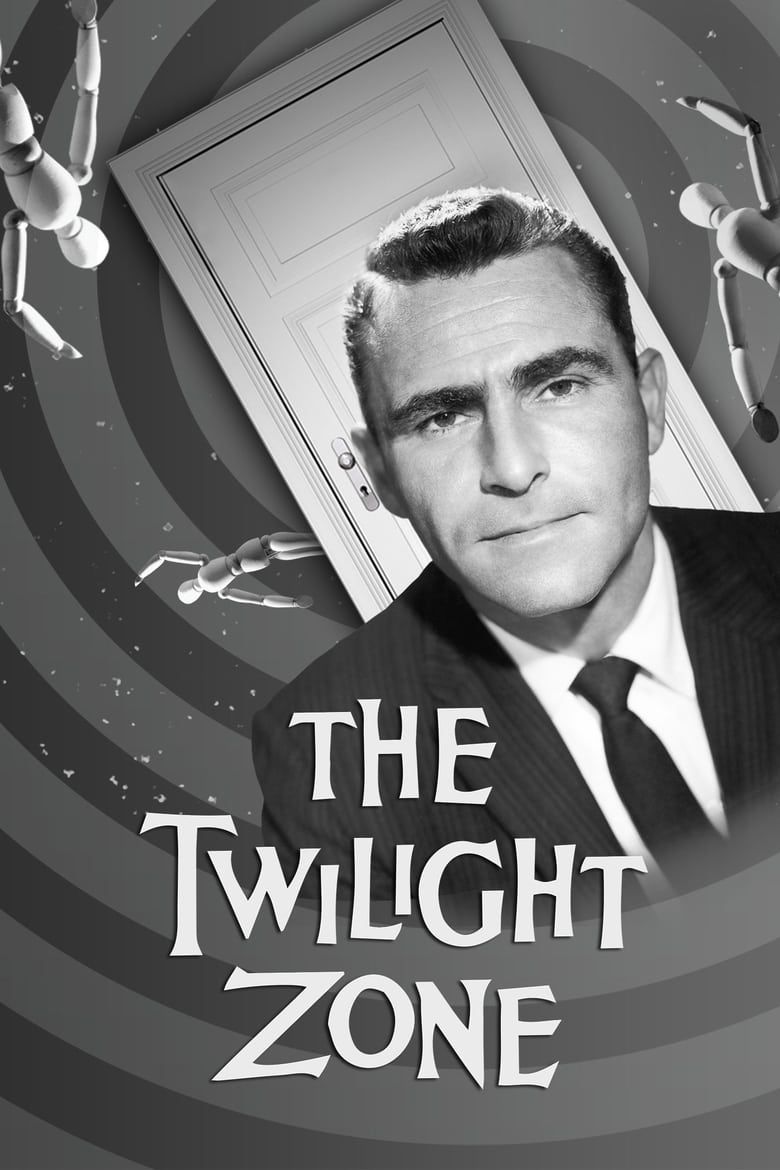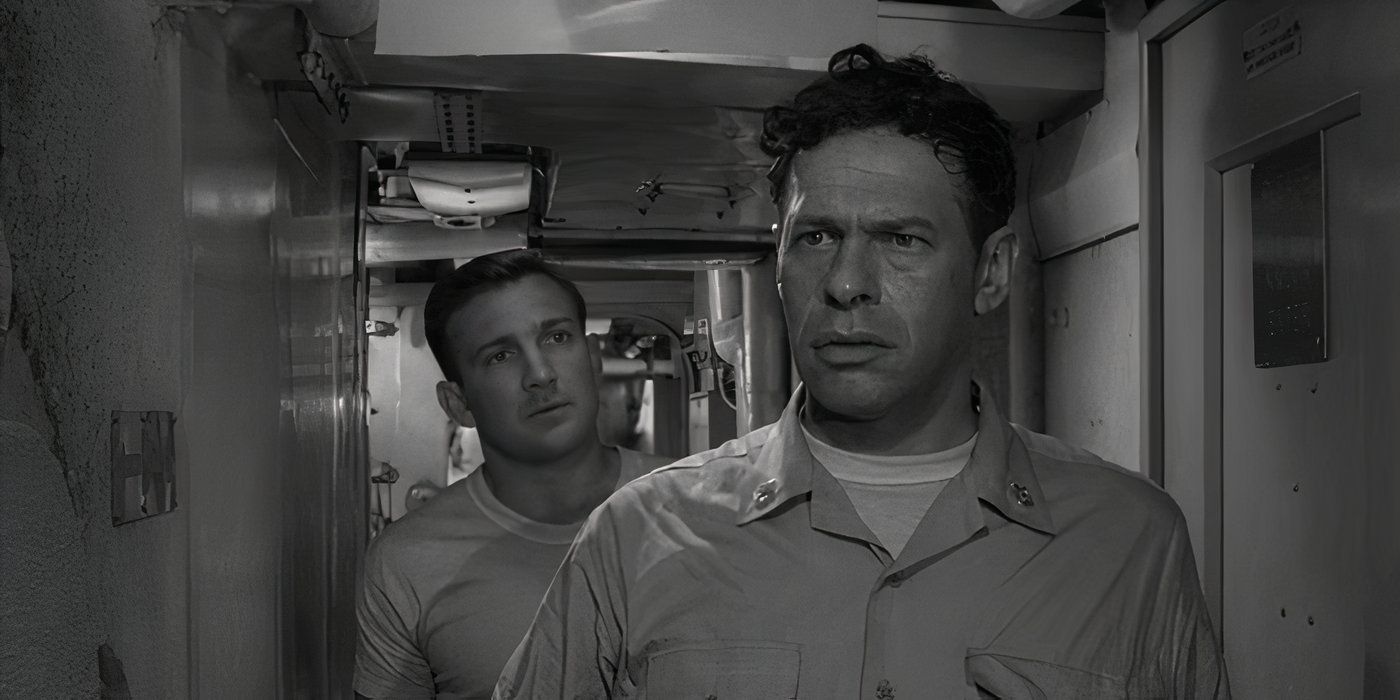
When The Twilight Zone entered its fourth season in 1963, it underwent its most significant structural change. CBS moved the show to a later timeslot and stretched the episodes to a full hour. That shift seemed to promise even deeper, more complex stories – but it didn’t always work in the show’s favor.
On the surface, longer episodes of The Twilight Zone sound like a dream for fans. More time meant more character development, more shocking twists, and a broader canvas for Rod Serling’s philosophical storytelling. However, in reality, not every concept could justify the extended format. For a show famous for its tight pacing and sudden gut-punch endings, hour-long episodes often felt bloated.
One of the most divisive stories from The Twilight Zone‘s hour-long season is a perfect example of this tension. Though it came directly from Rod Serling himself, and still carries some of his trademark thematic weight, it’s frequently pointed to as one of the show’s weaker entries from a narrative standpoint. “The Thirty-Fathom Grave” is a divisive Twilight Zone episode, but its weaknesses stem from one key factor – runtime.
Rod Serling’s “The Thirty-Fathom Grave” Episode Still Has Divisive Reviews Today
Even With A Strong Premise, The Episode’s Bloated Runtime Keeps It From Landing As Cleanly As It Should
In The Twilight Zone season 4 episode “The Thirty-Fathom Grave,” a sailor named Bell (played by Simon Oakland) serves aboard a U.S. Navy destroyer that responds to strange metallic sounds coming from a sunken submarine. As the crew investigates the eerie banging noises, Bell begins unraveling emotionally, plagued by guilt over a tragic incident from years earlier.
At its core, “The Thirty-Fathom Grave” is a slow-burning ghost story layered with post-war trauma. However, the reception has always been sharply divided. Some viewers appreciate its atmospheric tension and heavy themes, while others find it dragging, padded, and painfully repetitive.
What keeps it from greatness – at least for many fans – is pacing.
What keeps it from greatness – at least for many fans – is pacing. Unlike the brisk and focused half-hour installments The Twilight Zone was known for, “The Thirty-Fathom Grave” stretches out to fill time rather than deepen the plot. Scenes repeat ideas instead of evolving them. Bell’s psychological torment, compelling at first, becomes less urgent after the third or fourth variation of the same emotional beat.
Even the central mystery (the rhythmic pounding from below) loses its power through overexposure. The suspense plateaus early and never regains momentum. Rod Serling’s script is thoughtful, as always, but the hour-long format demands a dramatic arc that the premise doesn’t fully support.
While the episode contains flashes of brilliance, many critics argue that it simply doesn’t justify the expanded runtime. That’s the tragedy of “The Thirty-Fathom Grave”: not that it’s a bad episode of The Twilight Zone, but that it could have been great with a tighter leash.
“The Thirty-Fathom Grave” Would Have Been Perfect As A Half-Hour Episode
The Emotional Punch And Supernatural Mystery Would’ve Thrived In A Tighter, More Focused Format
Rod Serling was a master of tight, short-form storytelling. The best episodes of The Twilight Zone often operate like perfectly constructed short stories – punchy, unsettling, and resolved within 25 minutes. That’s why “The Thirty-Fathom Grave” feels so oddly out of place. Its ghostly premise is ideal for a short-form tale.
Trimmed down to its essential components, “The Thirty-Fathom Grave” tells a chilling and tragic story about guilt and the supernatural. If it followed the structure of earlier Twilight Zone entries, much of the unnecessary repetition could be cut. Bell’s breakdown wouldn’t need to be shown again and again – viewers just need to feel its emotional weight once, strongly.
“The Thirty-Fathom Grave” wastes time lingering on exposition, restating character motivations, and drawing out scenes that could be handled in half the time. The result is a narrative that stalls when it should accelerate. In a 30-minute format, the ghostly banging from the deep would have felt urgent and terrifying, instead of monotonous and over-explained.
A shorter version of “The Thirty-Fathom Grave” likely would’ve centered Bell’s confession sooner and built to a tighter resolution. Viewers could have been left with the haunting question of whether the sounds were supernatural or psychological – one of Rod Serling’s favorite ambiguities.
Instead, by extending it to an hour, the suspense fizzles out, and the final reveal lacks impact. It’s hard not to see how much more effective “The Thirty-Fathom Grave” could’ve been if it had aired in the show’s earlier seasons. The Twilight Zone was always strongest when it left viewers wanting more, not when it gave them too much.
“The Thirty-Fathom Grave” Continues One Of Rod Serling’s Most Emotional Episode Themes
Serling’s Recurring Focus On Military Trauma And Survivor’s Guilt Adds Meaning Even When The Format Falters
Despite its flaws, “The Thirty-Fathom Grave” remains undeniably Rod Serling. The episode echoes one of his most emotionally resonant themes throughout The Twilight Zone: the invisible scars carried by veterans, particularly those from World War II.
Chief Bell’s torment isn’t just narrative, it’s deeply personal. Simon Oakland’s performance captures a man crushed by survivor’s guilt, trapped in a cycle of shame and dread. That kind of character – a war veteran haunted more by his past than any ghost – appears again and again in many of the episodes of The Twilight Zone written by Rod Serling
Rod Serling himself served in World War II, and it left an indelible mark on his writing.
From “The Purple Testament” to “A Quality of Mercy,” Serling often used The Twilight Zone to explore the moral cost of war. “The Thirty-Fathom Grave” fits squarely in that tradition. The ghostly tapping becomes symbolic: the past that won’t stay buried, the guilt that never stops echoing. Even when the episode stumbles structurally, its emotional truth still cuts deep.
Rod Serling himself served in World War II, and it left an indelible mark on his writing. That’s likely why Bell’s pain feels so real. Plus, while the hour-long runtime works against the story’s pacing, it does allow “The Thirty-Fathom Grave” to contain moments of quiet introspection that give significant weight to the internal battles Bell is fighting.
Ultimately, while “The Thirty-Fathom Grave” might falter as a ghost story, it stands strong as a character study. For fans of The Twilight Zone who admire Rod Serling’s personal, principled voice, the episode still resonates – it may be flawed, but it’s undeniably sincere.

The Twilight Zone
- Release Date
-
1959 – 1964
- Showrunner
-
Rod Serling
- Directors
-
John Brahm, Buzz Kulik, Douglas Heyes, Lamont Johnson, Richard L. Bare, James Sheldon, Richard Donner, Don Medford, Montgomery Pittman, Abner Biberman, Alan Crosland, Jr., Alvin Ganzer, Elliot Silverstein, Jack Smight, Joseph M. Newman, Ted Post, William Claxton, Jus Addiss, Mitchell Leisen, Perry Lafferty, Robert Florey, Robert Parrish, Ron Winston, Stuart Rosenberg
- Writers
-
Charles Beaumont, Richard Matheson, Earl Hamner, Jr., George Clayton Johnson, Jerry Sohl, Henry Slesar, Martin Goldsmith, Anthony Wilson, Bernard C. Schoenfeld, Bill Idelson, E. Jack Neuman, Jerome Bixby, Jerry McNeely, John Collier, John Furia, Jr., John Tomerlin, Lucille Fletcher, Ray Bradbury, Reginald Rose, Sam Rolfe, Adele T. Strassfield









